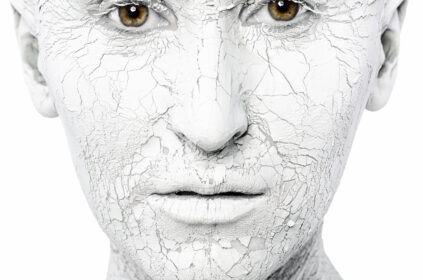Dr. Muneeb. Shah, a 31-year-old certified dermatologist with 90 million TikTok followers explains how, through self-examination, he identified a type of skin cancer growing on his chest.
Dr. Shah, who keeps his TikTok followers updated on the latest in medical advances, gave details to Refinery 29 of his discovery that the mark he found on his chest was actually a common form of skin cancer. The cancer discovery occurred when he was in dermatology training. He was being trained to instruct patients on methods to use when searching for evidence of skin cancer.
Dr. Shah noticed a mark on his own skin that resembled a pimple. It was pink and somewhat itchy. He kept the area under surveillance but once he scratched it and the surface fell off. Then the mark began to bleed. That was enough to start thinking about skin cancer. The spot remained on his chest for two months. Then the spot was finally analyzed by way of a biopsy which involves taking sample tissue and scrutinizing it under a microscope.
The results were back within three days. The diagnosis was basal cell skin cancer (basal cell carcinoma), one of its most common forms. There are several treatment options for skin cancer such as curettage and electrodesiccation, or Mohs surgery. Dr. Shah opted for Mohs surgery as there is a better chance of complete eradication.
Although the doctor had a minimal amount of pain post-surgery, he developed an infection around the site of the incision that required antibiotics and left a 5cm scar.
The doctor urges people to follow recommendations by the UK’s National Health Service (NHS) that emphasizes the importance of self-examinations. The service explains that the most common area of skin cancer for men is their back while for a woman it is her legs.
Three principal forms of skin cancer are basal cell carcinoma, squamous cell carcinoma and melanoma. The NHS cautions that any change in a mole or the growth of a new mole may indicate melanoma, which is a serious form of skin cancer.
You should call your doctor if you notice:
• A change in an existing mole
• Pain in a certain spot that does not heal in about four weeks
• If a sore is itchy, bleeds, or is crusty for several weeks
• Areas where an ulcer has formed but does not heal
Identifying Cancerous Moles
• A sore that does not heal: It may be pink and shiny, white, or red with raised edges.
• An ulcer: Be on the lookout for areas that have changed form and have not healed within four weeks.
• A lump: It may be small, pink, red or shiny.
• Red patches: May be itchy as a result of various non-cancerous conditions on the skin.
• Moles or Freckles: Changing to a freckle or a mole could signify melanoma which is also a type of skin cancer.
After testing and consultation your doctor may suggest more tests or refer you a specialist. Note that since his experience with skin cancer, Dr. Shah performs skin checks daily searching for moles or other abnormalities. He applies sunscreen every day.
Editor’s Note: Get Involved
Cancer doesn’t discriminate. WHATNEXT and its partners are interested in amplifying the voices of those from all identities and backgrounds. If you have a cancer journey to share, reach out here to learn more about how your voice can help spread awareness and inspire individuals from all walks of life.
basal cell carcinoma melanoma skin cancer squamous cell carcinoma
Last modified: January 23, 2025











